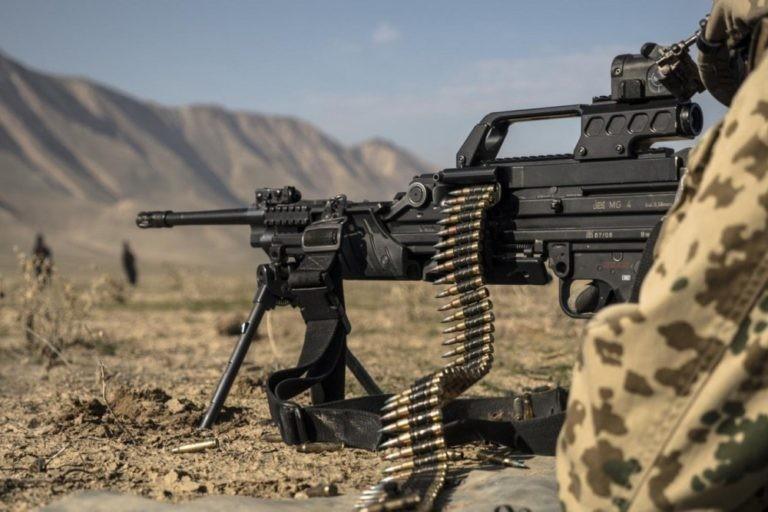Armenia steps up provocations in Azerbaijani border in January

By Akbar Mammadov
Since January 2020, Armenian military forces have intensified infiltration and sabotage attempts using large-calibre guns and sniper rifles on the state border with Azerbaijan, killing four Azerbaijani soldiers.
The Azerbaijani State Border Service has recorded eight sabotage attempts by the Armenian military forces between January and March. All these provocations were committed in the direction of Gazakh region where Azerbaijan’s border combat positions are located. Four Azerbaijani border guards were killed during their military service as a result of the provocations.
It is unknown why Armenian armed forces maintain to violate the ceasefire not only from the front positions in the Nagorno-Karabakh but also from the Gazakh region that is and was not the subject of the Nagorno-Karabakh war.
On January 7, Azerbaijani border guard Farzali Farzaliyev was killed in Armenian attack on Azerbaijan State Border Service’s (SBS) border combat positions in the direction of Gushci Ayrim village of Gazakh region.
Four days later, a separate border division of SBS in the Gazakh region was subjected to another sabotage by the Armenian forces.
On 15 January, border combat positions of SBS in the direction of Mazama village of Gazakh region were subjected to shelling from large-calibre guns and sniper rifles from the advisory side. In addition, divisions of Armenian armed forces, located near Berkaber village of Icevan region, intensively shelled the highway to the village from the regional centre of Gazakh by using large-calibre guns and sniper rifles.
On 24 February, Azerbaijan solder Alamshah Valiyev was killed while thwarting Armenian attack in the Qazax district’s Ayrimli village. The diversion group had used grenade launchers and other large-calibre weapons from the Armenian units located near the Koti village in Noyabmeryan district.
On March 2, the State Border Service and Military Prosecutor's Office, in a joint statement, revealed the result of the investigation into the 24 February attack, saying that “the adversary’s diversion group sabotaged the ceasefire regime by attacking for the purpose of deliberately killing our military servicemen and occupying the border point.
The joint statement also revealed material support of the Armenian infiltration attempt on the Gazakh district. The evidence included “100-bullet ribbon for PK machine gun, one unit of the unexploded RQ-42 hand grenade, 66 cartridge-cases of 7.62 mm, food bag of the intelligence-diversion group (tinned food, individual water reserve, bakery products) that the adversary used at the time of the armed raid nearby the border point where the incident occurred, and left behind themselves while retreating.”
On 5 March, another Azerbaijani border guard, Orkhan Pashzade (24), was killed in Armenian cease-fire violation, nearby the Qushci Ayrim village of the Gazakh district bordering Armenia.
The State Border Service said that “the Armenian military-political authority is responsible for the murder of the military serviceman of the State Border Service guarding internationally recognized borders of Azerbaijan.”
Armenian forces continued shelling from large-calibre guns and sniper rifles Azerbaijani border combat positions in the direction of Jafarli village of Gazakh region on March 6, from Sevkar and Sarikuyuk villages of Icevan region of Armenia.
On March 7, Azerbaijani soldier Elton Garayev was killed in a gunshot attack by Armenian forces, while performing official duties at the border combat section of the Gazakh separate border division near the Dash Salahly village.
On March 8, Azerbaijan’s border combat positions on the state border with Armenia in the direction of Gazakh region’s Gushchu Ayrim village were subjected to intensive shelling from large-calibre guns and sniper rifles by Armenian Armed Forces units located near the village of Voskepar of Armenia’s Noyemberyan district.
The conflict between the two countries began in 1988 after Armenia’s territorial claims against Azerbaijan. As a result of the ensuing war, Armenian armed forces occupied nearly 20 per cent of Azerbaijan, including the Nagorno-Karabakh region and seven surrounding districts.
It should be noted that the United Nations Security Council adopted several resolutions (822, 853, 874, 884) on withdrawal of Armenian armed forces from Nagorno-Karabakh and the surrounding districts. Moreover, the United Nations General Assembly adopted the resolution (62, 243) titled “The Situation in the Occupied Territories of Azerbaijan” on March 14, 2008. The resolution reaffirmed “continued respect and support for the sovereignty and territorial integrity" of Azerbaijan "within its internationally recognized borders", demanded the "immediate, complete and unconditional withdrawal of all Armenian forces from all the occupied territories of Azerbaijan", and emphasized that "no state shall render aid or assistance" to maintain the occupation of Azerbaijani territories.
Armenia has failed to comply by any legal documents with regards to the Nagorno-Karabakh conflict.
---
Akbar Mammadov is AzerNews’ staff journalist, follow him on Twitter: @AkbarMammadov97
Follow us on Twitter @AzerNewsAz
Here we are to serve you with news right now. It does not cost much, but worth your attention.
Choose to support open, independent, quality journalism and subscribe on a monthly basis.
By subscribing to our online newspaper, you can have full digital access to all news, analysis, and much more.
You can also follow AzerNEWS on Twitter @AzerNewsAz or Facebook @AzerNewsNewspaper
Thank you!
